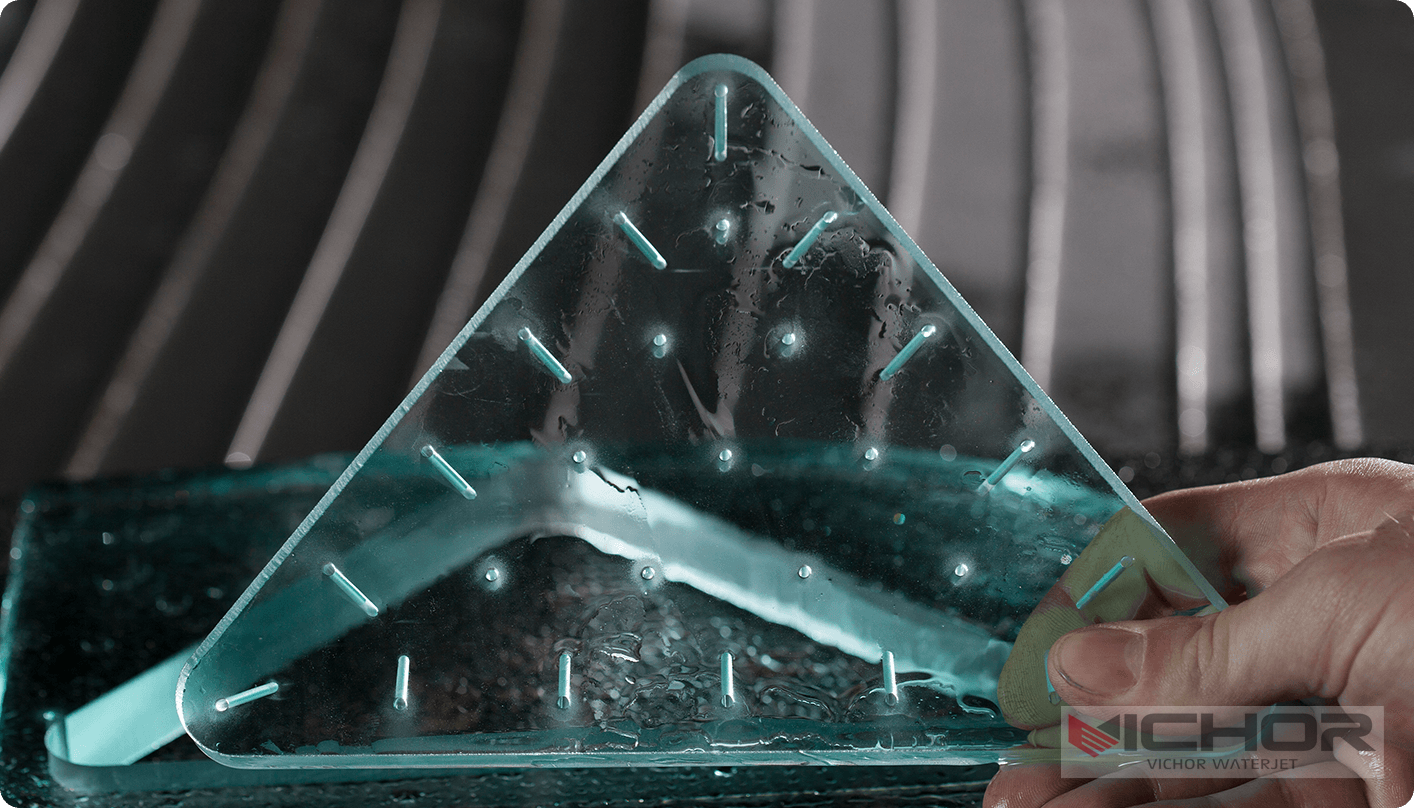
Mastering Water Jet Cutting Edge Quality: Your Ultimate Guide to Flawless Results
Have you ever examined a piece of metal or stone cut with a water jet and marveled at how smooth and precise the edges are? Or perhaps you’ve been frustrated by rough, uneven cuts that ruin your project’s finish. The truth is, water jet cutting edge quality isn’t just a minor detail—it’s the heart of what makes this technology so powerful for industries ranging from aerospace to art. In this comprehensive guide, we’ll dive deep into what defines excellent water jet cutting edge quality, how it stacks up against other methods, and practical tips to achieve the perfect cut every time. Whether you’re a seasoned engineer or a DIY enthusiast, understanding this aspect can save you time, money, and headaches.
Water jet cutting uses a high-pressure stream of water, often mixed with abrasives, to slice through materials. But not all cuts are created equal. The edge quality—measured by factors like smoothness, taper, and absence of burrs—can make or break your final product. Let’s explore why this matters and how you can harness it for your needs.
What Is Water Jet Cutting Edge Quality and Why Does It Matter?
When we talk about water jet cutting edge quality, we’re referring to the characteristics of the cut surface after the process is complete. This includes the surface finish, edge straightness, kerf width, and the presence of any defects like striations or heat-affected zones. Unlike thermal cutting methods, water jet cutting is cold, meaning it doesn’t alter the material’s structure through heat. This results in a clean, precise edge that requires little to no post-processing.
Why is this so important? In applications like medical device manufacturing or architectural design, even minor imperfections can lead to failures or aesthetic issues. For instance, a poorly cut turbine blade could reduce efficiency, while a rough edge on a glass panel might cause stress cracks. By focusing on water jet cutting edge quality, you ensure durability, safety, and visual appeal. Key metrics include Ra (roughness average), which quantifies surface texture, and taper angle, which indicates how much the cut deviates from vertical. Typically, a high-quality water jet cut will have a low Ra value and minimal taper, often achievable through advanced nozzle designs and precise control systems.
Moreover, the water jet cutting edge quality is influenced by variables such as pressure, abrasive type, and traverse speed. For example, slower speeds generally produce smoother edges but increase costs. Understanding these factors empowers you to tailor the process to your specific material—whether it’s titanium, granite, or composites.
Comparing Water Jet Cutting Edge Quality to Other Cutting Methods
How does water jet cutting edge quality measure up against alternatives like laser, plasma, or mechanical cutting? Each method has its strengths, but water jet often shines in versatility and precision. Let’s break it down.
Laser cutting, for instance, uses heat to melt or vaporize materials, which can introduce heat-affected zones (HAZ) that weaken the edges. This is a big drawback for heat-sensitive materials like plastics or certain metals. In contrast, water jet cutting edge quality remains consistent across a wide range of materials because it’s a cold process. You won’t see warping or hardening, making it ideal for delicate projects.
Plasma cutting, on the other hand, is fast and cost-effective for thick metals but tends to produce rougher edges with more dross (residual molten material). This often requires additional grinding or finishing. Water jet cutting edge quality, especially when using abrasive additives, delivers smoother surfaces with minimal burrs. However, plasma might be better for high-volume, low-precision jobs where edge perfection isn’t critical.
Mechanical methods like sawing or milling can achieve excellent precision but are limited by tool wear and material hardness. Water jet cutting doesn’t have this issue—it can handle hard materials like ceramics without dulling tools. The key takeaway? If your priority is a burr-free, precise edge without thermal damage, water jet cutting edge quality is hard to beat. It’s particularly superior for complex shapes and thick materials, though it may be slower than lasers for thin sheets.
Applications and Selection Guide for Optimal Water Jet Cutting Edge Quality
Water jet cutting isn’t just for industrial giants; it’s used in countless fields where edge quality is paramount. From aerospace components that demand tight tolerances to artistic sculptures requiring intricate details, the applications are vast. In automotive manufacturing, for example, water jet cutting edge quality ensures that gaskets and filters fit perfectly without leaks. In food processing, it’s used to cut products like cookies or meat with hygienic, clean edges.
When selecting a water jet cutting service or machine, consider your material type and thickness. Soft materials like rubber or foam might only need pure water jets, while metals and ceramics require abrasive water jets for better water jet cutting edge quality. Also, think about the required precision—projects like electronic enclosures need near-perfect edges, whereas rough structural cuts might tolerate some imperfection.
Here’s a quick guide to help you choose:
For materials prone to heat damage (e.g., plastics or tempered glass), prioritize water jet cutting for its cold process.
If you’re working with thick materials (over 50 mm), water jet often outperforms lasers in edge consistency.
For high-volume production, evaluate speed versus quality; water jets can be optimized with dynamic controls to balance both.
Remember, the goal is to match the water jet cutting edge quality to your end-use. Don’t over-specify for a non-critical part, as it could inflate costs unnecessarily.
How to Find and Evaluate Water Jet Cutting Service Providers
Finding a reliable supplier for water jet cutting services can be daunting, but focusing on water jet cutting edge quality will guide you to the right partner. Start by researching local or online providers with proven experience in your industry. Look for certifications like ISO standards, which indicate a commitment to quality control.
When evaluating potential suppliers, ask for sample cuts or portfolios to assess their water jet cutting edge quality firsthand. Check for consistency across edges, minimal taper, and smooth finishes. Inquire about their equipment—modern pumps with pressures above 60,000 psi often yield better results. Also, discuss their use of abrasives; garnet is common, but finer grades can enhance edge smoothness.
Another key factor is their technical support. A good provider will offer consultations to optimize your design for water jet cutting edge quality, such as suggesting feed rates or nozzle sizes. Read reviews or ask for references to gauge reliability and customer service. Ultimately, choose a partner who communicates clearly and demonstrates a deep understanding of how to achieve superior water jet cutting edge quality for your specific needs.
Breaking Down the Costs: What Affects Water Jet Cutting Prices?
Cost is a major consideration when pursuing high water jet cutting edge quality. Several factors influence pricing, so let’s demystify them. First, machine operating costs include electricity, water, and abrasives—which can account for up to 60% of expenses. Higher-quality abrasives improve water jet cutting edge quality but may cost more. Additionally, pump maintenance and nozzle wear add to ongoing costs.

Material type and thickness play a big role. Thicker materials require slower cutting speeds to maintain water jet cutting edge quality, increasing time and labor costs. Complex designs with sharp angles or small details also take longer, raising the price. For instance, achieving a mirror-like finish on stainless steel might involve multiple passes, doubling the cost compared to a standard cut.
Location and supplier markup matter too. Local shops might charge less for shipping but have higher hourly rates. To save money without compromising water jet cutting edge quality, consider grouping parts for batch processing or opting for a slightly rougher finish if it’s acceptable for your application. Always request detailed quotes that break down these elements, so you can see where investments in water jet cutting edge quality pay off.
The Science Behind Superior Edge Quality in Water Jet Cutting
Delving into the technology, water jet cutting edge quality is governed by physics and engineering. The process starts with a high-pressure pump that accelerates water to supersonic speeds. When abrasives are added, they erode the material in a controlled manner. The key to excellent water jet cutting edge quality lies in minimizing vibrations, optimizing abrasive mix, and controlling the jet’s trajectory.
Advanced systems use CNC (Computer Numerical Control) to precisely guide the nozzle, reducing deviations that cause taper. Taper compensation software can adjust the path to produce nearly vertical edges. Moreover, the abrasive water jet cutting edge quality benefits from consistent particle size and flow rate—variations here lead to uneven surfaces.
Research shows that lower traverse speeds and higher pressures enhance smoothness, but at the cost of efficiency. Innovations like dynamic water jet heads now allow real-time adjustments, improving water jet cutting edge quality for contours and corners. For those pushing the limits, ultrasonic-assisted water jets are emerging to further refine edges. Understanding these technical aspects helps you collaborate better with providers and innovate in your projects.
Frequently Asked Questions About Water Jet Cutting Edge Quality
Q1: What are the main factors that affect water jet cutting edge quality?
A1: The primary factors include traverse speed, water pressure, abrasive type and size, nozzle condition, and material properties. Slower speeds and higher pressures generally produce smoother edges, while worn nozzles or inconsistent abrasive flow can degrade quality.
Q2: How can I improve water jet cutting edge quality for delicate materials?
A2: For delicate materials like glass or composites, use finer abrasives, reduce the traverse speed, and ensure the machine is calibrated for minimal vibration. Also, consider using soft catch systems to support the material during cutting.
Q3: Is water jet cutting edge quality consistent across different material thicknesses?
A3: It can vary; thicker materials often show more taper and roughness due to longer exposure times. However, with proper settings like tapered compensation and optimized speeds, you can maintain high water jet cutting edge quality even for thick sections.
Q4: What is the typical roughness value (Ra) for a good water jet cut?
A4: For abrasive water jet cutting, Ra values typically range from 1.6 to 6.3 micrometers, depending on the material and settings. Smoother edges (lower Ra) are achievable with slower cuts and finer abrasives.
Q5: How does water jet cutting edge quality impact post-processing needs?
A5: High water jet cutting edge quality reduces or eliminates the need for post-processing like grinding or polishing. This saves time and costs, making it a key advantage over methods that leave burrs or heat damage.
In conclusion, mastering water jet cutting edge quality is essential for anyone relying on precise, clean cuts. By understanding the fundamentals, comparing methods, and applying practical tips, you can elevate your projects to new levels of excellence. Start by assessing your needs and partnering with experts who prioritize quality—your results will speak for themselves.
continue reading
Related Posts
- 1461 words7.4 min read
- 1466 words7.4 min read



